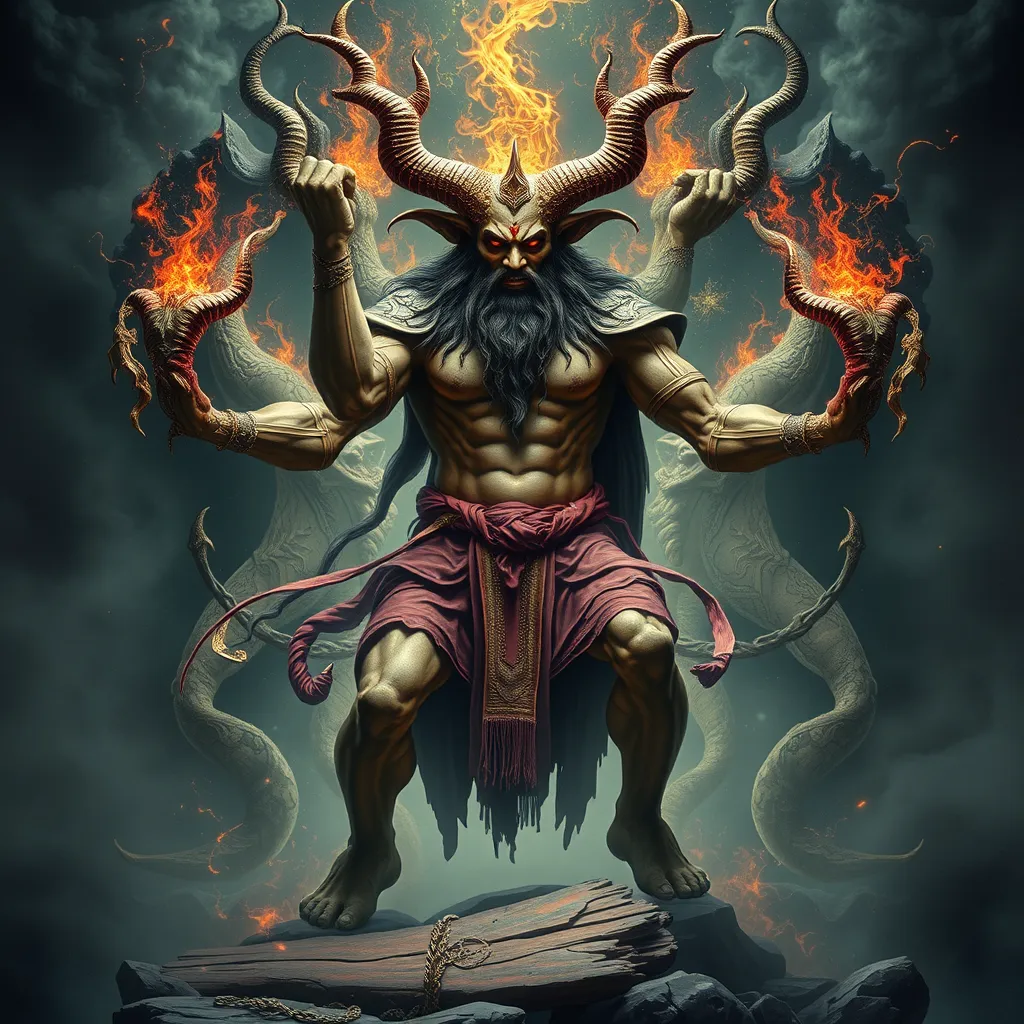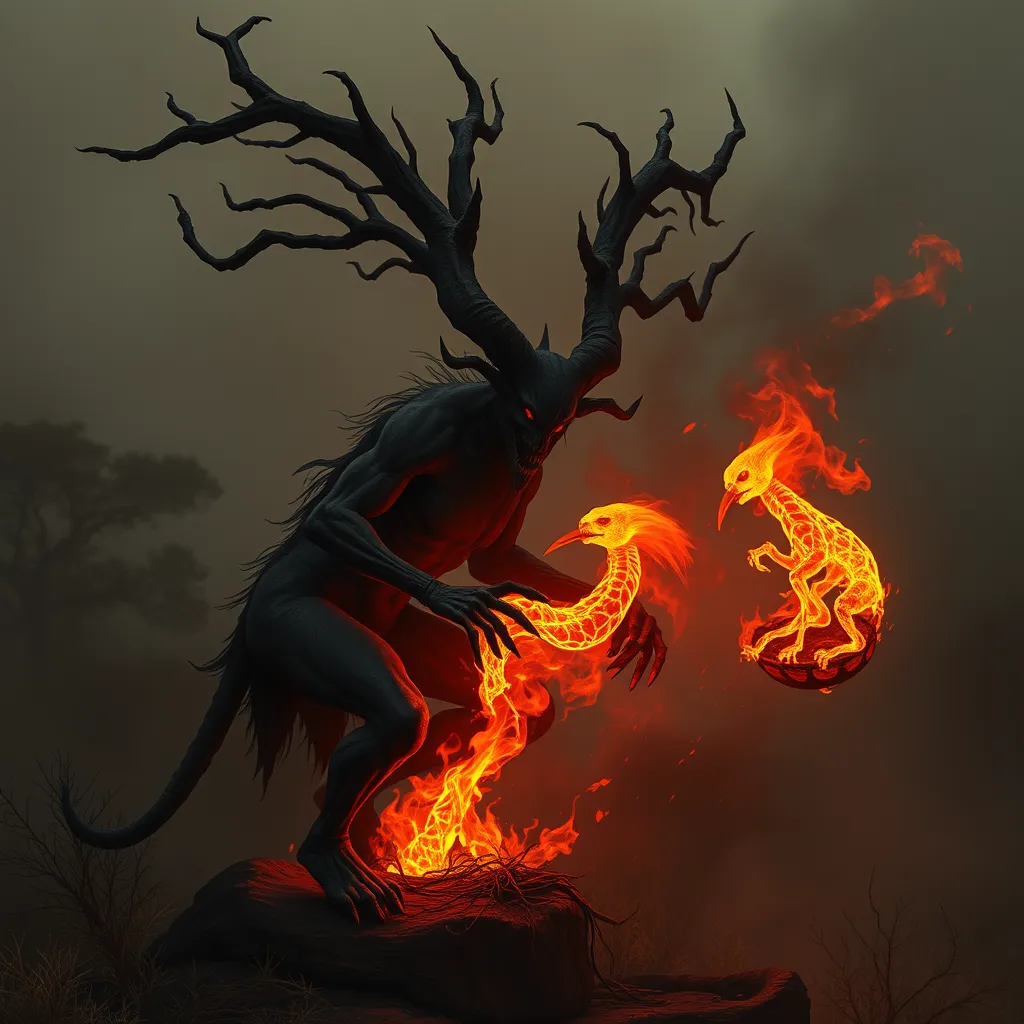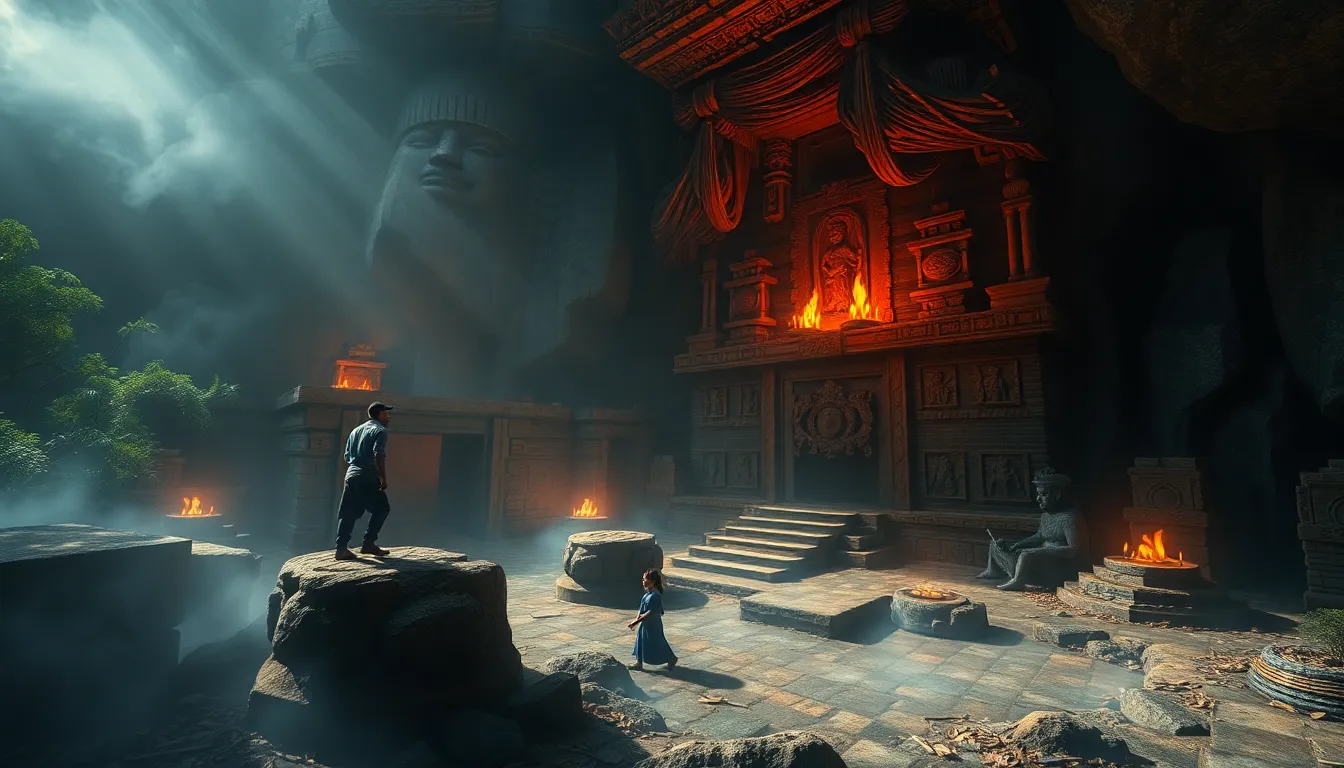The Rakshasa in Ancient Greek Mythology: The Titans and their Demonic Descendants
I. Introduction
The world of mythology is vast and intricate, filled with beings that embody the complexities of human nature and the universe. Among these mythical entities, the Rakshasa from Hindu mythology and the Titans from Greek mythology stand out as significant figures. The Rakshasa are demonic beings known for their shape-shifting abilities and malevolent nature, while the Titans represent primordial giants that were once the rulers of the cosmos before being overthrown by the Olympian gods. This article aims to explore the connections between these two mythological frameworks, examining their characteristics, roles, and the cultural significance they hold.
II. The Titans: Giants of Greek Mythology
The Titans are a group of deities in Greek mythology who preceded the Olympian gods. They are often depicted as colossal beings who embody various aspects of the natural world and human experience.
A. Origin and significance of the Titans in Greek lore
According to myth, the Titans were the offspring of Uranus (the sky) and Gaia (the earth). They symbolize the primal forces of creation and are integral to the ancient Greek understanding of the world.
B. Key figures among the Titans and their roles
- Cronus: The leader of the Titans, who overthrew his father Uranus.
- Rhea: The mother of the Olympian gods, representing fertility and motherhood.
- Oceanus: The Titan of the ocean, often depicted as a river encircling the earth.
- Hyperion: The Titan of light, known for his association with the sun.
C. The Titanomachy: The war against the Olympian gods
The Titanomachy was a significant conflict in Greek mythology where the Titans fought against the younger generation of gods, the Olympians, led by Zeus. This epic battle resulted in the defeat of the Titans, who were subsequently imprisoned in Tartarus, marking a shift in power dynamics within the mythological hierarchy.
III. Understanding Rakshasa: Characteristics and Role
In contrast to the Titans, the Rakshasa are a central element of Hindu mythology, often portrayed as supernatural beings with both benevolent and malevolent traits.
A. Description of Rakshasa in Hindu texts
Rakshasa are described in ancient Hindu texts such as the Ramayana and the Mahabharata. They are often depicted as shape-shifters who can assume various forms, including that of animals or humans.
B. Attributes, powers, and abilities of Rakshasa
- Shape-shifting: The ability to transform into any creature or human.
- Illusion: Creating illusions to deceive and manipulate others.
- Superhuman strength: Possessing immense physical power.
C. The role of Rakshasa in Hindu epics like the Ramayana
In the Ramayana, the Rakshasa are often portrayed as antagonists, with Ravana, the king of the Rakshasa, being a primary antagonist against Lord Rama. This epic illustrates their moral ambiguity, as they embody both the chaos of desire and the complexities of dharma (righteousness).
IV. Parallels Between Titans and Rakshasa
Despite their cultural differences, the Titans and Rakshasa share several similarities, making them fascinating subjects for comparative analysis.
A. Similarities in physical attributes and powers
Both Titans and Rakshasa are depicted as powerful beings, often with immense physical stature and abilities that set them apart from ordinary humans. Their supernatural capabilities allow them to manipulate the world around them, whether through brute force or cunning trickery.
B. Thematic connections: Chaos, rebellion, and demonic nature
Both groups embody themes of chaos and rebellion. The Titans rebel against the Olympians, while the Rakshasa frequently defy the gods and moral order in Hindu mythology. This rebellious nature is a core aspect of their identities, linking them to the darker elements of human experience.
C. Comparative analysis of their roles in their respective mythologies
In their respective narratives, both the Titans and Rakshasa serve as antagonists to the established order, representing the challenge against divine authority. Their stories often highlight the struggle between good and evil, order and chaos.
V. Cultural Interpretations and Symbolism
The symbolic meanings of the Titans and Rakshasa extend beyond their mythological origins, influencing various aspects of culture and art throughout history.
A. Symbolism of Titans as forces of nature and chaos
The Titans symbolize the untamed forces of nature, embodying the raw power and chaos that can exist in the world. Their defeat by the Olympians represents the triumph of order over chaos.
B. The Rakshasa as a representation of moral ambiguity and evil
Rakshasa often symbolize the moral ambiguities within human nature. They are not purely evil; instead, they reflect the duality of existence, showcasing desires and flaws that can lead to chaos.
C. Influence of these figures on ancient cultures and modern interpretations
Both the Titans and Rakshasa have influenced literature, art, and popular culture. Their stories continue to resonate, inspiring modern interpretations in films, books, and art forms, showcasing the enduring relevance of these mythological figures.
VI. The Legacy of Titans and Rakshasa in Literature and Art
The legacy of the Titans and Rakshasa is evident in various forms of literature and art, where their narratives are reimagined and explored.
A. Depictions in ancient and modern literature
In ancient literature, epics like the Ramayana and Hesiod’s Theogony detail the exploits of these beings. Modern literature often revisits these themes, exploring the complexities of power and morality.
B. Influence on art and popular culture
Artistic representations of Titans and Rakshasa can be found in sculptures, paintings, and performances, often highlighting their formidable nature. In popular culture, they inspire characters and storylines in movies, video games, and graphic novels.
C. The enduring legacy of these mythological figures
The myths surrounding Titans and Rakshasa continue to captivate audiences, serving as metaphors for human struggles and the chaotic elements of existence.
VII. Cross-Cultural Influences and Interactions
The interactions between ancient Greek and Indian cultures provide a fascinating backdrop for understanding the development of these mythological figures.
A. Historical interactions between ancient Greek and Indian cultures
Trade routes and conquests facilitated cultural exchanges between the Greeks and Indians, leading to shared ideas and themes in mythology and philosophy.
B. The spread of mythological themes across cultures
Mythological themes often transcend cultural boundaries, with stories of giants and demons appearing in various forms across different civilizations, suggesting a universal fascination with these archetypes.
C. Potential influences on the development of Rakshasa and Titan narratives
As cultures interacted, it is possible that the narratives surrounding Rakshasa and Titans influenced one another, leading to shared motifs and ideas in their storytelling.
VIII. Conclusion
In conclusion, the exploration of Rakshasa in Hindu mythology and Titans in Greek mythology reveals profound insights into the nature of chaos, power, and morality. Both figures serve as reflections of humanity’s struggles and the complexities inherent in existence. Studying these mythological connections is crucial for understanding cultural narratives and their impact on human nature. The enduring legacy of the Titans and Rakshasa continues to resonate, reminding us of the timeless themes present in our shared stories.



